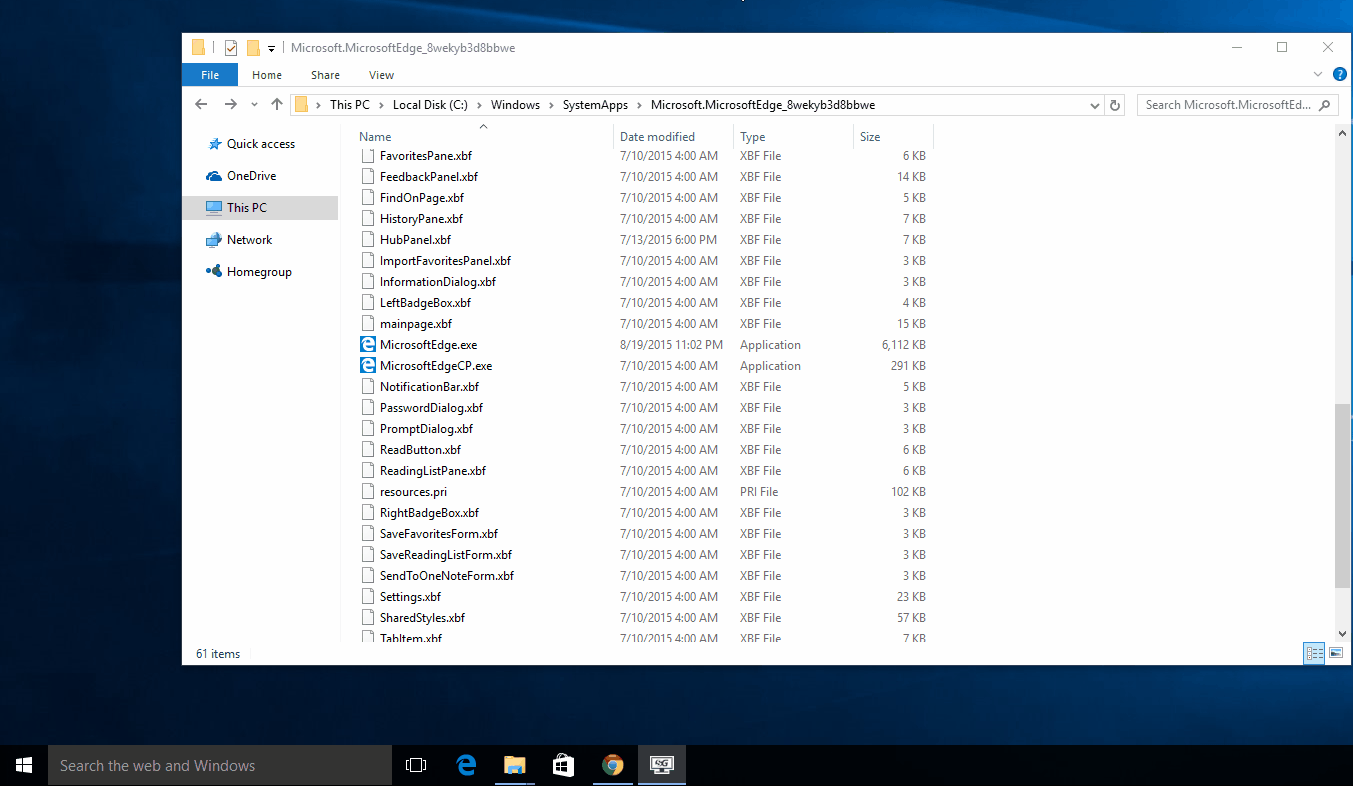


And, it DOES directly answer the Subject Line of the OP's question. Yes, strictly speaking, this does not answer the OP's question about where the registry entry is, and about using the newer Settings-based interface, but it may offer a simpler solution that more people (including myself) are looking for when they land on this question, and that may not be obvious on a quick reading of previous answers (even though some do explicitly mention Control Panel). However, the older "Control Panel" interface (which is still easily available in Windows 10) does allow removal of an errant entry. When there is a problem uninstalling an application, the newer "Settings" interface does not currently provide the option to remove the entry. Right-click that folder and select Properties. You can sort installed applications by installation date, recently used and alphabetically. Navigate to the following folder: C:WindowsSystemApps Locate the Microsoft.MicrosoftEdge8wekyb3d8bbwe folder. is it Open Start > Settings > Apps > Apps &. Use the edge://apps page to see your installed applications and manage app permissions. Faster performance Microsoft Edge uses Chromium to provide world-class compatibility and performance online. Which version of Microsoft Office (2016,2013,2010,2007) or Microsoft Word/Excel/PowerPoint etc. By far the easiest way is to head into the Apps section of your settings. If you attempt to access Microsoft Web apps and services from Internet Explorer after August 17, 2021, you may experience degraded performance or be unable to connect at all.
#Windows update deleted microsoft edge app windows 10
I'm adding this answer because, judging from some of the comments, it is not clear to all that Windows 10 offers two separate interfaces for uninstalling programs, and that editing the registry is generally not required to remove an entry from the programs list. There are two ways to get rid of Microsoft Edge and which method you use depends on how you first installed the browser.


 0 kommentar(er)
0 kommentar(er)
